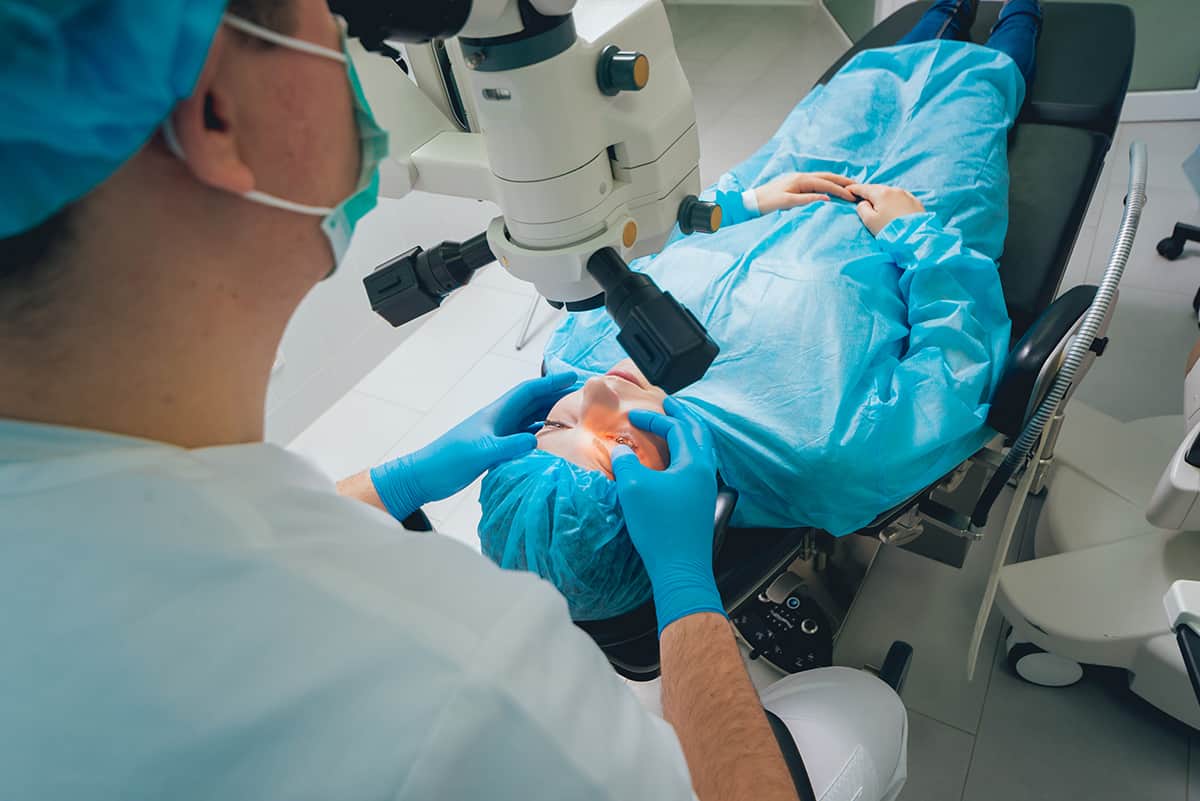
Many of Laser Eye Center’s patients who have undergone LASIK describe the surgery as a miracle. Being able to wake up and see nearly every detail in high-definition vision — without glasses or contact lenses — seems nothing short of magical. But make no mistake: LASIK isn’t magic. It was actually developed based on some very advanced science!
Understanding how and why LASIK works requires a basic grasp of biology, physics and laser technology. Read on as the team at Laser Eye Center explains why LASIK is performed and what surgeons hope to achieve.
The Cornea’s Function
LASIK is performed on the cornea, the clear dome-shaped tissue that makes up the front part of the eye. (You can think of the cornea as the “window” to the eye.) The cornea is responsible for most of the eye’s focusing power. Light from near and distant objects enters the eye through the cornea, and the cornea refracts, or bends, that light into the tissue at the back of the eye called the retina.
However, this process is not always seamless. According to the National Eye Institute, more than 150 million Americans experience refractive errors, which are problems with the way the cornea focuses light.
Understanding Refractive Errors
The most common refractive error is nearsightedness, or myopia. With myopia, the curvature of the cornea is too steep, causing light to focus in front of the retina. Someone who is nearsighted can see close-up objects clearly but struggles to see faraway objects.
Farsightedness, or hyperopia, occurs when the cornea lacks curvature and is too flat. This causes light to focus behind the retina. Someone who is farsighted can see faraway objects clearly but has problems seeing nearby objects.
Astigmatism is irregular or asymmetrical curvature (i.e., curvature that is too steep in one direction) of the cornea. It causes light rays to scatter without coming to a proper point on the retina. Someone with astigmatism has problems with both near and distance vision.
How Does LASIK Correct Refractive Errors?
LASIK permanently treats refractive errors by reshaping the cornea so that it is able to properly refract light into the retina. During LASIK, a state-of-the-art laser removes microscopic amounts of tissue, refining the cornea’s curvature.
In people who are nearsighted, the laser reduces the cornea’s steepness or sharpness. In people who are farsighted, the laser increases the cornea’s steepness. In people with astigmatism, the laser improves the smoothness and symmetry of the cornea.
For many patients, vision is better after LASIK than what could previously be achieved with glasses or contacts. Patients usually find they no longer need visual aids (or they only need them on rare occasions or for certain tasks).
If you are interested in learning more about computer vision syndrome and this incredible vision correction procedure, Laser Eye Center invites you to schedule a consultation with a member of our team. Call (800) 805-2737 or fill out our online contact form to request an appointment at one of our 12 Los Angeles-area locations.
Schedule your free consult today
Click here to learn moreGet started on your journey to clearer, crisper vision with Laser Eye Center™. Our expert team of doctors are trained and skilled in the latest technology and methods for laser vision correction. To learn more about our state-of-the-art All Laser LASIK technology or about All Laser LASIK itself, contact us today. Schedule your FREE All Laser LASIK consultation by calling today.

